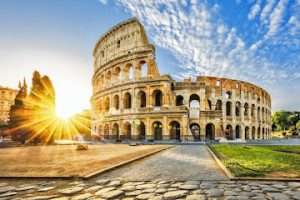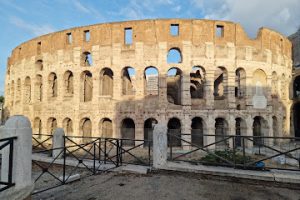This was the appearance of the Roman Colosseum in those days.

The Colosseum, an emblem of ancient Rome, silently narrates the grandeur and brutality of a bygone era. Crafted under Emperor Vespasian’s astute vision, it replaced Nero’s opulent Domus Aurea, strategically garnering favor with the populace. Its immense scale accommodated over 50,000 spectators, hosting gladiatorial combats and wild animal battles for more than seven centuries. Emperor Vespasian’s political finesse is evident in the transformation of Nero’s artificial lake into a hub of entertainment. The Colosseum, initially named the Flavian Amphitheater, became synonymous with Roman spectacle. Noteworthy is the innovative fusion of Greek theater elements, creating a distinctive amphitheater type. The exterior, adorned with Doric, Ionic, and Corinthian columns, exemplifies Roman ingenuity, repurposing Greek orders purely for ornamental beauty.

The Mind-Blowing Architecture and Engineering of Rome’s Colosseum
The Colosseum – From Gladiator Fights to Gory Executions and Sea Battles
The Colosseum’s weathered interior reveals a sophisticated structure with concrete substructures supporting tiered seating. Each section, or cuneus, designated for different social classes, echoes the societal hierarchy. However, time and pillaging during the Middle Ages altered its face, stripping away marble-clad seats. Despite dilapidation, glimpses into ancient glory persist. Imagining the arena filled with artificial grass, trees, and props, one envisions gladiators and wild beasts engaging in spectacular performances. The Colosseum, a reflection of Roman engineering and entertainment, echoes through time, whispering tales of a bygone era.
